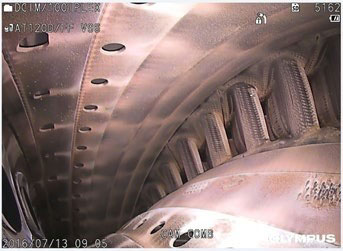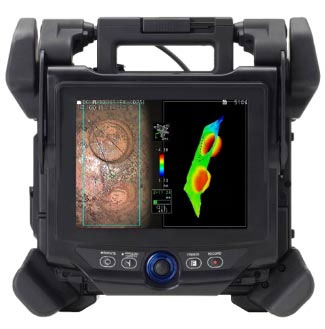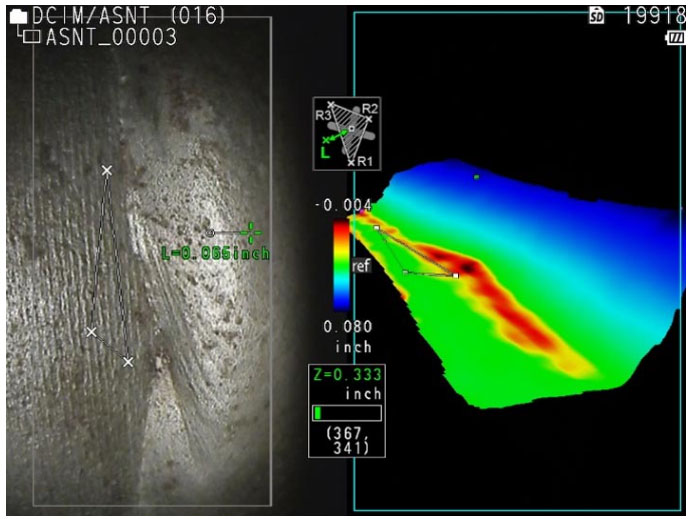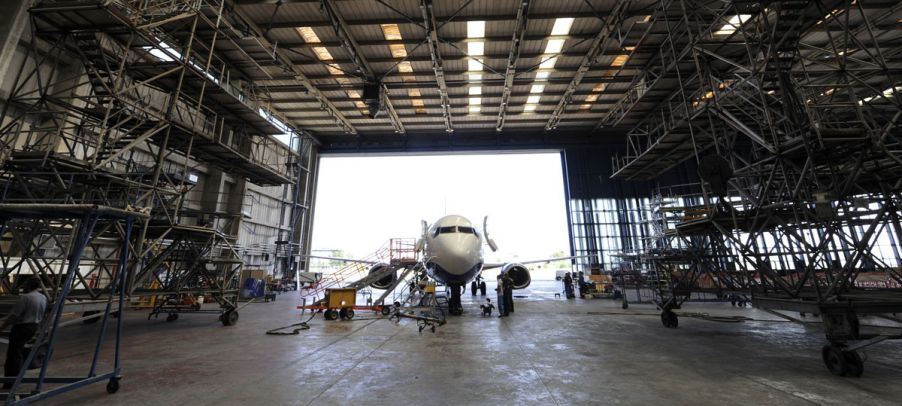For companies that operate and maintain aircraft, inspecting critical components of the aircraft’s engines is a regular part of proactive maintenance protocols. These protocols are in place not only to validate an aircraft is operating normally, but also to ensure it’s safe to fly.
The turbofan engines of passenger aircrafts vary in size, from small turbine engines found on regional passenger jets to the large turbine engines of intercontinental airliners. There are numerous components that require inspection inside each engine, such as turbine blades, compressor blades, and the combustion chamber. Precise inspection results are required, so it’s important to use tools that enable complete and reliable examination of the engine and its internal components. And you have to be able to accomplish this without disassembling the engine.
Reliable Aircraft Engine Inspection Requires the Right Videoscope
An aviation company’s inspection staff need to be familiar with a variety of nondestructive testing (NDT) techniques and have testing equipment that is versatile and easy to operate. Previously, I discussed how videoscope inspections help enhance flight safety. Now, I’ll go into detail about the advanced technologies of the IPLEX™ NX videoscope that facilitate reliable remote visual inspection (RVI) of turbofan engines of all sizes.
Several domestic aviation companies have purchased IPLEX NX industrial videoscopes to perform their daily inspections, and their overall positive feedback touches on these four points:
- High-definition (HD) images
- Fast and accurate measurements
- High reliability and durability
- Our excellent after-sales service and short product-maintenance cycle
Regarding the NX model’s performance in these areas, all users gave their thumbs up. The advanced technologies described below contribute to the first three items on this list.
4 Technologies That Ease Defect Detection inside Aircraft Engines
Evident’s advanced videoscope technology facilitates the detection of potential defects, enabling users to clearly observe fine cracks and other defects inside the aeroengine.
Here are four particularly useful technologies for this application:
1. Ultrabright Laser Diode Illumination
You can’t image what you can’t see, and the inside of an engine is very dark. Our laser diode technology enhances the illumination brightness to at least five times that of white light LEDs. The combination of this advanced narrow-band laser technology and HD-level charge-coupled device (CCD) sensors reveal even small details, improving the image resolution and optimizing the battery life.
Watch this video to see the brightness you can achieve with our laser diode illumination system:
2. PulsarPic™ Image Processor and WiDER™ Image Processing Software
IPLEX NX industrial videoscopes are equipped with PulsarPic image processors that intelligently optimize its illumination system to provide even light intensity and increased gain.
Our patented WiDER image processing technology provides images with a high dynamic range to brighten underexposed areas and reduce the exposure in overexposed areas. It supports sharpness adjustment, so you obtain crisp, high-resolution images in real time on the display.
The two technologies work together to provide a clear view of fine cracks, pitting, missing material, and other defects.

Distinguish and Measure Corrosion More Accurately
When monitoring corrosion, use the videoscope’s adjustable color temperature to distinguish between areas of microcorrosion that are similar in color, and measure corrosion accurately using the 3D modeling tools (discussed below). Our NX videoscopes also provide built-in channel capture solutions required by the aerospace industry.
3. From Super Wide View to Short Working Distance Optical Adaptors
When inspecting aeroengines, the observation requirements may vary depending on the parts and locations to be inspected. For example, a wide viewing angle may be required to observe the inside of a combustion chamber. Whereas, in tighter areas of the engine, such as high-pressure turbines and compressors where there is minimal space for the insertion tube tip, you may need a shorter working distance lens with a narrow field of view.
Watch this video to see the super wide field of view offered by the IPLEX NX videoscope:
The IPLEX series optical adaptors benefit from our century-long experience in optical system design. There are tip adaptor options for a range of viewing angles—from an ultrashort working distance to our super wide view—near to far focusing, and direct and side viewing. We provide an extensive line of optical adaptors to satisfy different inspection applications in various environments.
4. 3D Modeling and Measurement Tools
When inspecting with a videoscope, specifying the exact location of measurement points can be tricky if the shape of the target is not clear. This is where 3D modeling comes in handy.

3D modeling can provide various 3D views of the target to help you visually evaluate its surface. By placing the 3D view of the target next to its 2D view, you can get a better understanding of the target, increasing your confidence when selecting measurement points. When the selection of points is more accurate, the risk of misalignment is reduced. Inspections can be performed faster, while minimizing the need for remeasurement.

Watch this video to see how easy it is to set reference lines with the 3D modeling tool:
For more information on the IPLEX NX videoscope, go to www.olympus-ims.com/rvi-products/iplex-nx/.
Related Content
2 Modern Videoscope Capabilities for More Precise Aerospace Inspections
3 Reasons to Add a Working Channel Scope to Your RVI Toolbox
Visual Inspections of Commercial Jet Engines
Get In Touch


.jpg?rev=5BA7)